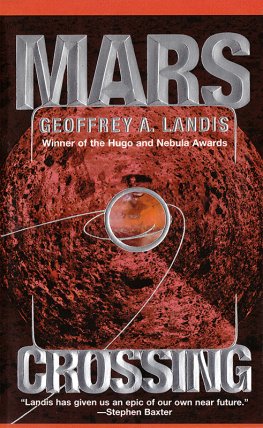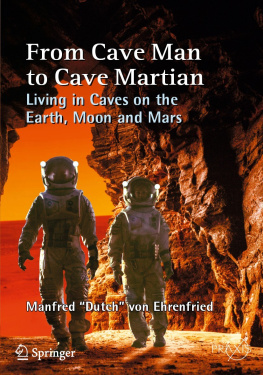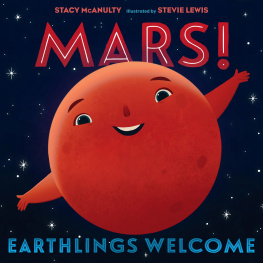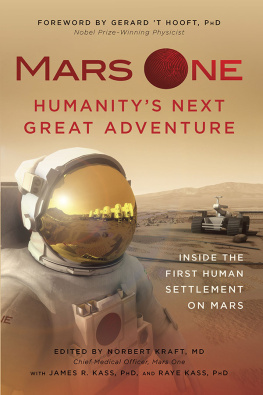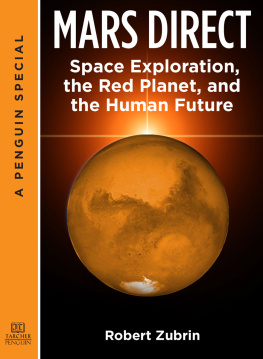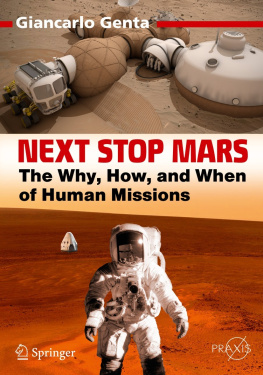We hope you enjoyed reading this TED Books eBook.
Join our mailing list and get updates on new releases, deals, bonus content and other great books from TED Books and Simon & Schuster.
C LICK H ERE T O S IGN U P
or visit us online to sign up at
eBookNews.SimonandSchuster.com
Thank you for downloading this TED Books eBook.
Join our mailing list and get updates on new releases, deals, bonus content and other great books from TED Books and Simon & Schuster.
C LICK H ERE T O S IGN U P
or visit us online to sign up at
eBookNews.SimonandSchuster.com

Simon & Schuster, Inc.
1230 Avenue of the Americas
New York, NY 10020
www.SimonandSchuster.com
Copyright 2015 by Stephen Petranek
All rights reserved, including the right to reproduce this book or portions thereof in any form whatsoever. For information address Simon & Schuster Subsidiary Rights Department, 1230 Avenue of the Americas, New York, NY 10020.
TED, the TED logo, and TED Books are trademarks of TED Conferences, LLC.
First TED Books hardcover edition July 2015
TED BOOKS and colophon are registered trademarks of TED Conferences, LLC.
SIMON & SCHUSTER and colophon are registered trademarks of Simon & Schuster, Inc.
For information about special discounts for bulk purchases, please contact Simon & Schuster Special Sales at 1-866-506-1949 or .
For information on licensing the TED Talk that accompanies this book, or other content partnerships with TED, please contact .
Interior design by: MGMT. design
Cover design by: Chip Kidd
Cover photo by: Daniel Kaesler/Alamy
Library of Congress Cataloging-in-Publication Data is available.
ISBN 978-1-4767-8476-2
ISBN 978-1-4767-8477-9 (ebook)
I want Americans to win the race for the kinds of discoveries that unleash new jobs... pushing out into the solar system not just to visit, but to stay. Last month, we launched a new spacecraft as part of a reenergized space program that will send American astronauts to Mars.
President Barack Obama, State of the Union Address, January 20, 2015
CONTENTS
INTRODUCTION
The Dream
A prediction:
In the year 2027, two sleek spacecraft dubbed Raptor 1 and Raptor 2 finally make it to Mars, slipping into orbit after a grueling 243-day voyage. As Raptor 1 descends to the surface, an estimated 50 percent of all the people on Earth are watching the event, some on huge outdoor LCD screens. At this juncture of Earths and Marss orbits, it takes about twenty minutes for signals to reach the home planet, so people back on Earth are caught in a strange warp of time and space. As the ship descends to Martian soil, the four astronauts aboard could already be dead if something has gone wrong.
Nearly a decade of anticipation has come down to this moment: the spacecraft inches to the surface as the blast effect of braking rockets kicks up red dust. An Earth-bound audience waits eagerly as an announcer reminds them of a press conference that took place years earliera meeting that shocked the world and embarrassed NASA, which was still at least two years from testing its Mars spacecraft with humans aboard. On that day, the company behind this private effort to reach Mars revealed that it was about to build a series of huge rockets to transport people to Mars, and that within a decade it would launch one or two of them to effect the first manned landing on the Red Planet.
As Raptor 1 settles into a massive crater near the Martian equator, the astronauts aboard are already thinking ahead. Time is precious. If all has gone well with the first landing, Raptor 2 will follow within hours, carrying more explorers on board. First on the astronauts punch list is the deployment of a base camp habitat, part of the enormous cargo the ships have carried. They must also inflate buildingsdomed, pressurized tents made of exotic materials that will increase their living area and act as greenhouses in which to grow food.
Some environmental similarities exist between Earth and Mars. The Martian terrain looks a lot like certain parts of Earththe dry valleys in Antarctica or the high deserts on Hawaiian volcanoes. Many other factors will prove to be extremely challenging. A day on Mars is only thirty-nine minutes and twenty-five seconds longer than a day on Earth, but a Martian year is far longer than one on Earth687 daysmaking seasons twice as long. Marss orbit is oval, meaning seasonal variations between winter and summer are more severe than those on Earth; in the southern hemisphere, summers are warmer and winters are colder. Ultimately these Martian settlers intend to establish two bases, one below the equator in the southern hemisphere for summers and one north of the equator for winters.
But now, within twenty-four hours, the first humans to walk on Mars must begin their most important task: finding water. They must determine if there is, as NASA landers and orbiters have predicted, enough water in the surface soil, called regolith, to support both their hydration needs as well as serve as a stock for making more of the oxygen they will consume. The astronauts purposely landed in a crater that a NASA orbiter spotted as having a smooth sheet of pure water ice. If that sheen isnt ice, they will need to find a second site nearby with a high percentage of ice in the regolith. If that sort of ice cannot be found nearby, the astronauts will deploy ground-penetrating radar to find underground water, and then drill.
Long before the next ships arrive (two years from this moment), these astronauts must build more permanent structures, possibly out of bricks they make from the regolith. Although today is sunny and relatively warmabout 50 degrees Fahrenheittemperatures will plunge as darkness approaches, turning the environment into something akin to a bad night at the South Pole. Landing near the equator allows the astronauts to take advantage of milder temperatures that can reach 70 degrees Fahrenheit on a summer day. But at night, the temperature easily reaches minus 100 degrees, and structures will be needed to insulate the astronauts from the cold as well as to protect them from solar rays that are almost unrestricted by the thin atmosphere.
In the event that everything goes wrongthey cannot find a good water supply, the radiation effects are more severe than predicted, or one of the ships is badly damaged on landing, they will hunker down and await a decent launch window for the long trip back to Earth. Otherwise, they are here to stay.
These first explorers, alone on a seemingly lifeless planet as much as 250 million miles away from home, have everything in common with the trailblazers who preceded themthe great explorers throughout history who scaled mountains and sailed oceans to create new lives. And yet, despite their commonality with explorers of years past, these spacefaring pioneers are in every way more important than any explorers who have ever preceded them. Their presence on Mars represents the greatest achievement of human intelligence.
Anyone who watched Neil Armstrong set foot on the moon in 1969 can tell you that, for a moment, the Earth stood still. The wonder and awe of that achievement was so incomprehensible that some people still believe it was staged on a Hollywood set. When astronauts stepped onto the moon, people started saying, If we can get to the moon, we can do anything. They meant that we could do anything on or near Earth. Getting to Mars will have an entirely different meaning: If we can get to Mars, we can go anywhere.
The achievement will make dreamy science fiction like Star Wars and Star Trek begin to look real. It will make the moons of Saturn and Jupiter seem like reasonable places to explore. It will, for better or worse, create a wave of fortune seekers to rival those of the California gold rush. Most important, it will expand our vision as far from the bounds of Earths gravity as we can imagine. When the first humans set foot on Mars, the moment will be more significant in terms of technology, philosophy, history, and exploration than any that have come before it, all because we will no longer be a one-planet species.
Next page


